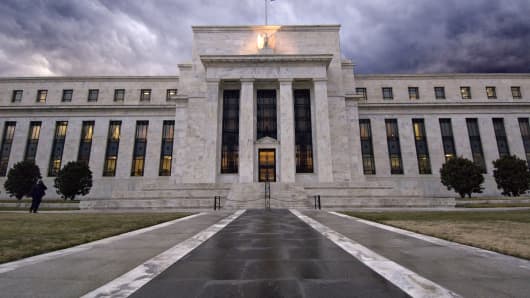Both on the sidelines and in public at this year's economic symposium in Jackson Hole, Wyo., Fed officials suggested that a September taper is more likely than not.
While nearly everyone insisted that a decision to reduce the asset purchases under quantitative easing depends on incoming economic data—especially the August employment report—they also implied that the burden is on the economy to prove why the Fed should not taper.
In other words, fair-to-middling economic data that point to 2 percent growth and 150,000 to 200,000 of monthly job gains—such as the U.S. has achieved over the past several years—probably would be enough to support a September taper decision.
In a CNBC interview from Jackson Hole, Atlanta Fed President Dennis Lockhart expressed the view of several Fed officials when he said, "I'm actually looking at the data and asking if they deny or in some way undermine the basic outlook that I have in place. And, on that basis, then I could get comfortable with a move in September of some kind."
In fact, several officials talked about the controversial June guidance from Fed Chairman Ben Bernanke as "the plan," which apparently was the product of a compromise between hawks and doves on the committee. Bernanke's guidance pointed to a near-term tapering en route to winding down purchases by mid-2014 if supported by better economic data. Officials suggested that it's a matter of credibility for the Fed to follow through on what it had told markets.
(Read more: Bernanke's absence from Jackson Hole leaves markets guessing)





